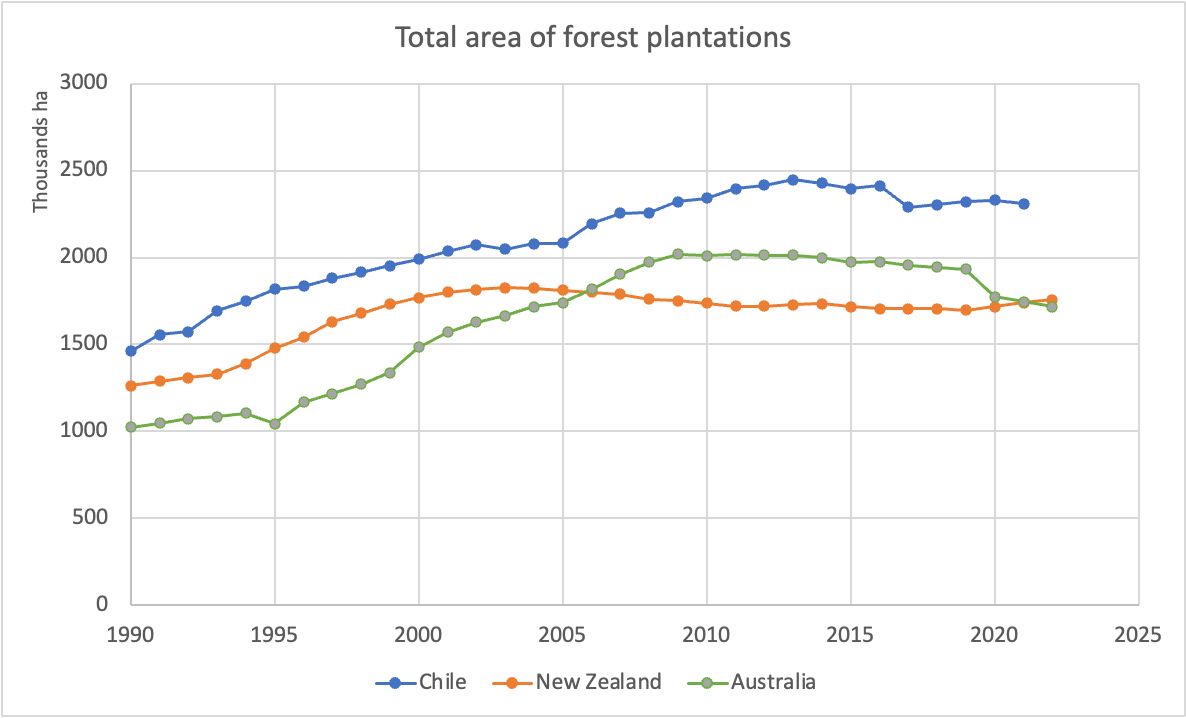We all stopped expanding our forest estate
A few days ago I was comparing afforestation figures—planting in area that didn’t have trees before—across New Zealand, Chile and Australia. There was a bit of discussion in the comments but, of course, that was only a small part of painting a picture of the plantation forestry sector in each country.
This time, I am plotting the total planted forest estate (excluding native forests) in each country. All three Southern Hemisphere countries have stopped expanding their total estate, with only a few years difference. New Zealand reached its peak area in 2003 (1.82 million ha), Australia in 2009 (2.02 million ha) and Chile in 2013 (2.45 million ha).
Leo Tolstoy wrote in Anna Karenina that “all happy families are alike; each unhappy family is unhappy in its own way”. All three forest sectors have different reasons to explain or justify the area contraction, although there is at least one commonality: uncertainty.
For example, the ETS mess in the early 2000s in NZ resulted in large areas of young plantations converted to dairy use in the Canterbury region. My previous post showed an uptick on newly planted land in New Zealand (some of it converted from meat production to forestry); still it is not big enough to compensate for the loss of planted land in previous years. Chile has experienced a decade-long megadrought, large forest fires in the 2016-17 season (a drop of area), together with political complexity from 2019 onwards.
All three countries are supposed to increase CO2 sequestration as part of their commitments against climate change. It is looking like a hard call to achieve this with our current political settings.
